
- Offer Profile
-
Vision
A smartly automated production world characterized by modularity and flexibility. Men and machines work together at maximum efficiency. Machining companies are enabled to compete sustainably with their local and global competitors on speed, quality and price.
Mission
Offering the best and most accessible range of modular automation standards, enabling small and mid-scale machining companies to maximize their profitability.
Which automation solution is right for you?
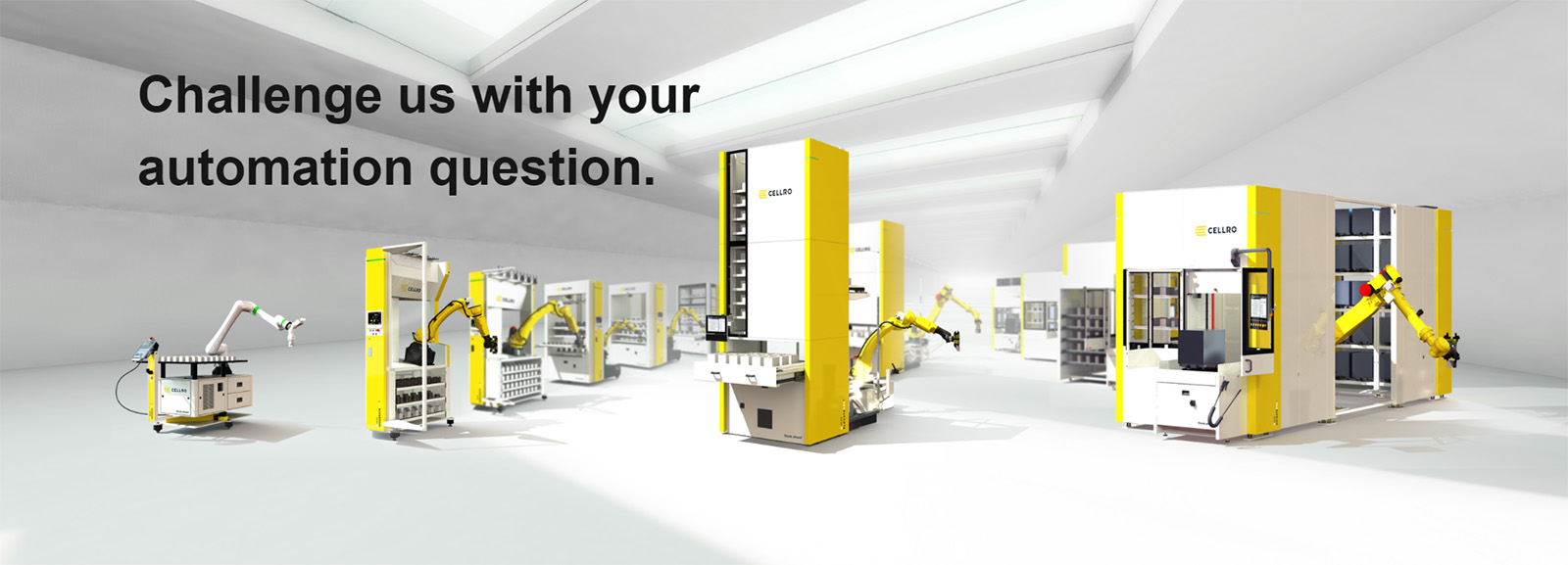
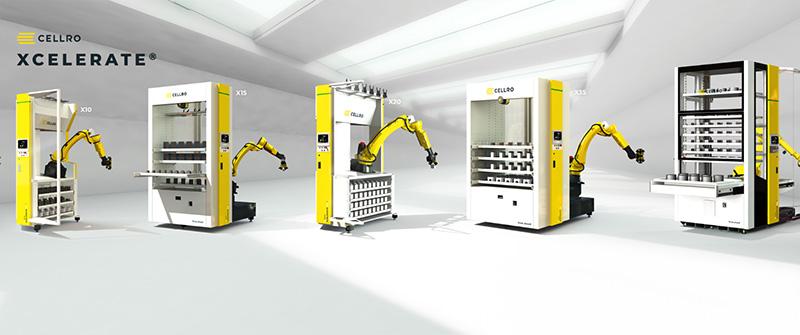
Xcelerate
-
Xcelerate is intended to be used to load workpieces into one machine at a time. Whether used on an old or new milling machine, lathe, measuring bench, bench grinder or another machine, Xcelerate can ensure that production batches are automatically completed. When Xcelerate is not in use, the robotic arm folds away and the machine is free to be used in regular production. This enables the specialist and the machine to concentrate on more challenging work during regular working hours. It is even possible, and simple, to relocate Xcelerate with a pallet jack if you wish to automate different machines at different times.
Xcelerate is reliable and can be quickly installed on the shop floor. Due to the easy-to-use software, our customers find that they experience an increase in their production capacity from day one with the same number of staff. Xcelerate can load a wide range of products and is therefore universal, and can even be used for smaller batches. What’s more, if standard product grippers are not sufficient for loading a complex product shape, you can make custom ‘fingers’ using the templates or we can deliver them to you.
Xcelerate is available in three models: X10, X20 and X60 with a maximum robot handling wight of 70 kg.
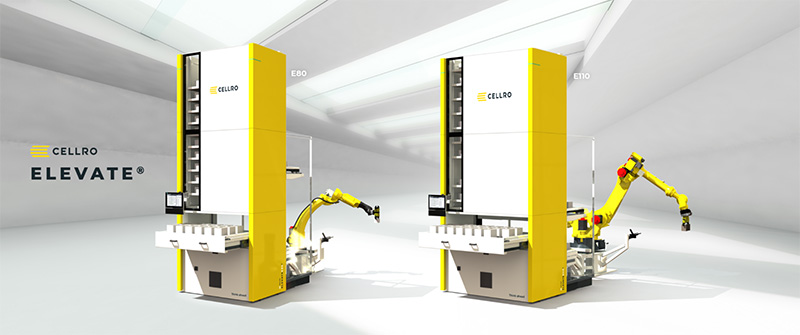
Elevate
-
Elevate is the automation solution that maximizes product storage capacity whilst using the smallest possible floor space. A large variety of products can be flexibly handled by storing the products on trays. Elevate can operate one or more lathes, milling machines or other types of machines.
Due to the ergonomic loading position, the products can simply be placed on a tray using a drawer. The tray is then stored in Elevate and is ready for the robot on demand.
The place of the active tray from which the robot retrieves and delivers products has a separate position, so the lift and the robot can work parallel to each other. So if, for example, you request a tray with manufactured products, the lift can pick it up without interrupting the robot’s work. If Elevate is loading several machines, a second operating position is possible.
Since the robot is separate from the lift, a wide assortment of robots with different payloads is available. Long-term autonomy of your machine(s) is guaranteed due to the large storage capacity.
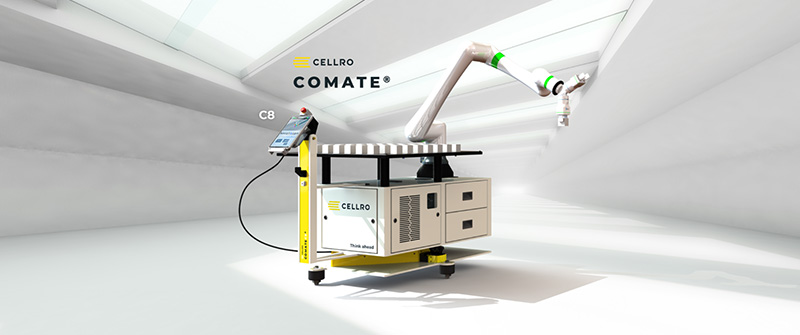
Comate
-
Get to know robot automation.
Comate is characterized by very easy integration and operation. FANUC’s collaborative robot enables a world where man and robot safely share the same workspace. Moreover, Comate’s mechanics and controls are designed to allow you to fully adapt the cell to the machine to which it is connected. The basic frame, with the cobot and a table mounted on it, allows the storage to be used for different workpieces. The highly modular gripper program provides a very universal and flexible automation system with the quality you would expect from Cellro.
- Can be used almost anywhere in the production process due to compact dimensions and lack of fencing.
- The sensors are sensitive and provide an immediate safety stop upon contact with a human body.
- Simply guide your robot to the desired position and save it on the tablet using the Drag & Drop feature.

Ultimate
- Modularity and functionality are masterfully combined in Ultimate. Due to the system’s modular design, automation can grow with the customer’s production process. And because both functionalities as well as pallet, product handling and tool handling can be added to and interchanged.
Ultimate is an efficient solution for automating one to two machines or even a complete line with more CNC machines and integrated functionalities like measuring, marking and so on.
Ultimate is often used for handling single pallets of more than 125 kg, in combination with product handling. Tool handling can be added if the machine controls can be modified to allow for this.
Ultimate is controlled via intelligent and user-friendly software that gives the operator lots of information to help them optimize the production process. The software can also be integrated with the top-layer MES and ERP software. The machine gate ensures the machine stays accessible. Ultimate modularity allows it to be expanded/converted into the Track system.
Customers
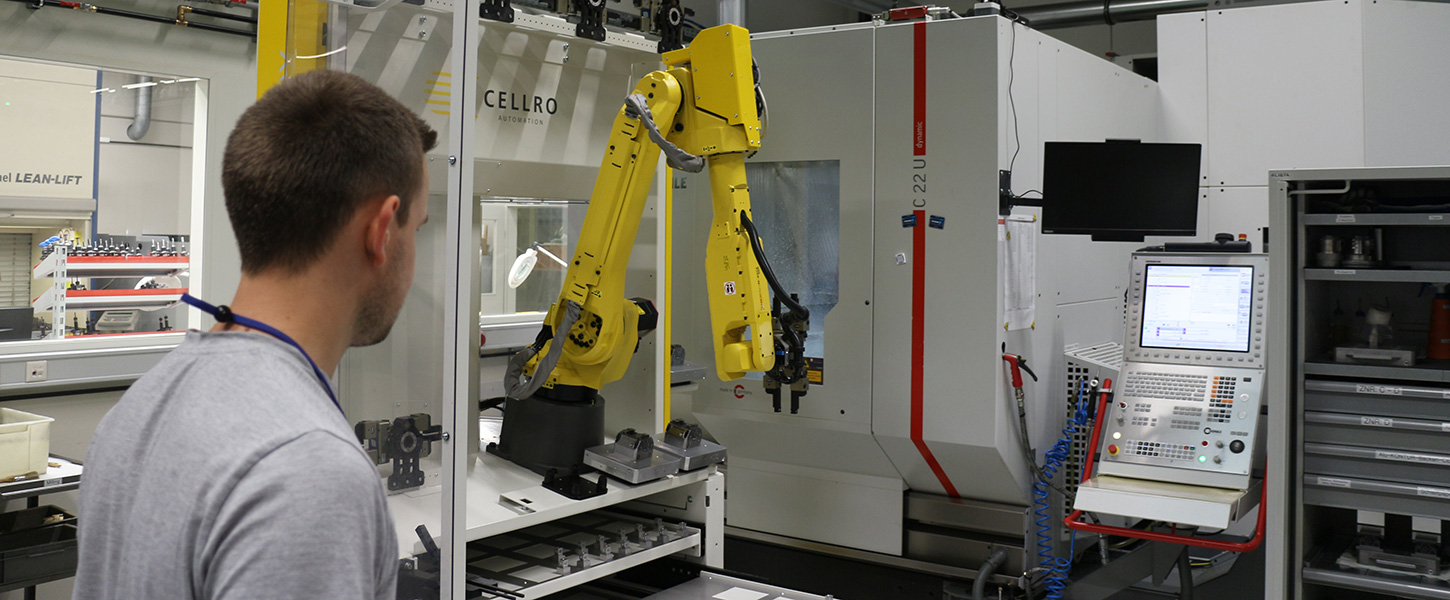
- Cellro enables its customers to get optimal returns from their machines. The result is less labor costs, more production per hour and more hours of operation. Now and in the future. We are proud of our customers. They choose our automation solutions.
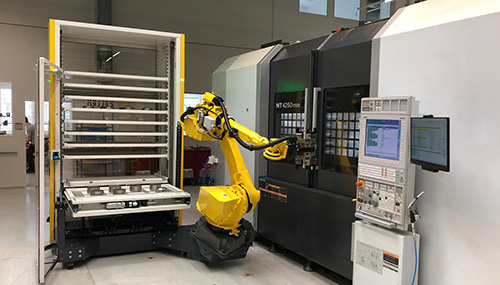
Anton Paar - Xcelerate
-
Large variation in series sizes: from three pieces to a thousand pieces
Anton Paar produces, develops and sells measuring tools for a range of different applications. The company was founded in 1922 and is located in Graz, Austria. The company specialises in devices for measuring density, concentration and rheology and for determining the amount of CO2 in dissolved carbon dioxide. Anton Paar employs around 2,500 members of staff, who use automation solutions daily for the production of virtually all of the company’s measuring tools. While a typical batch consists of 100 workpieces, this number can rise to 500 and even to 1,000 workpieces in extreme cases.
Xcelerate is often used in turning and milling machines. The decision to use Xcelerate arises from the difficulty in finding qualified staff capable of carrying out this work, particularly for the afternoon and night shifts.
Anton Paar has no less than four Xcelerates in its production hall. Recently Anton Paar even bought a fifth Xcelerate: Xcelerate X60.

Imminkhuizen Metaaltechniek – Xcelerate, Elevate
-
Growth with the help of automation
Founded in 2008, Imminkhuizen Metaaltechniekis a metalworking familly business.Rijk Imminkhuizen founded the business with his wife to manufacture both complex and simple metal products in a new more efficiently way. The company grew rapidly from a modest workshop to today’s established business with a large machine park. Withing the first five years Imminkhuizen Metaaltechniek purchased its first automation solution: Xcelerate. A second automation solution has been added next, the Elevate system from Cellro.

PoSyTec – Modulerate
-
‘I really like Modulerate: it’s easy to operate, and quick to set up. What’s more, we’ve had no issues in over six months.’
Posytec based in Biglen, near Bern, Switzerland, produces mechanical parts for various industries including everything from car and train technology to medical technology. The company applied new automation solutions to allow their Matec machines to produce small product runs anytime they have free production slots. Limiting costs was also an important factor to responde to an increasing number of internationl requests.
White paper: What to keep in mind when automating a milling machine

-
Automate your milling machine
The industry is going toward automated milling. Many companies wonder if their milling machines are suitable for automation. Looking for the right way to automate your milling machine? Cellro specialises in automation solutions. Our white paper will provide you with some handy tips!
- Cellro’s automation solution to clamp products in the milling machine
- Types of milling machines and automation
- Four prerequisites to automate your milling machine
- Four tips on determining whether or not to automate
Read the white paper to find out more?
Fixture Exchange and Collet Exchange
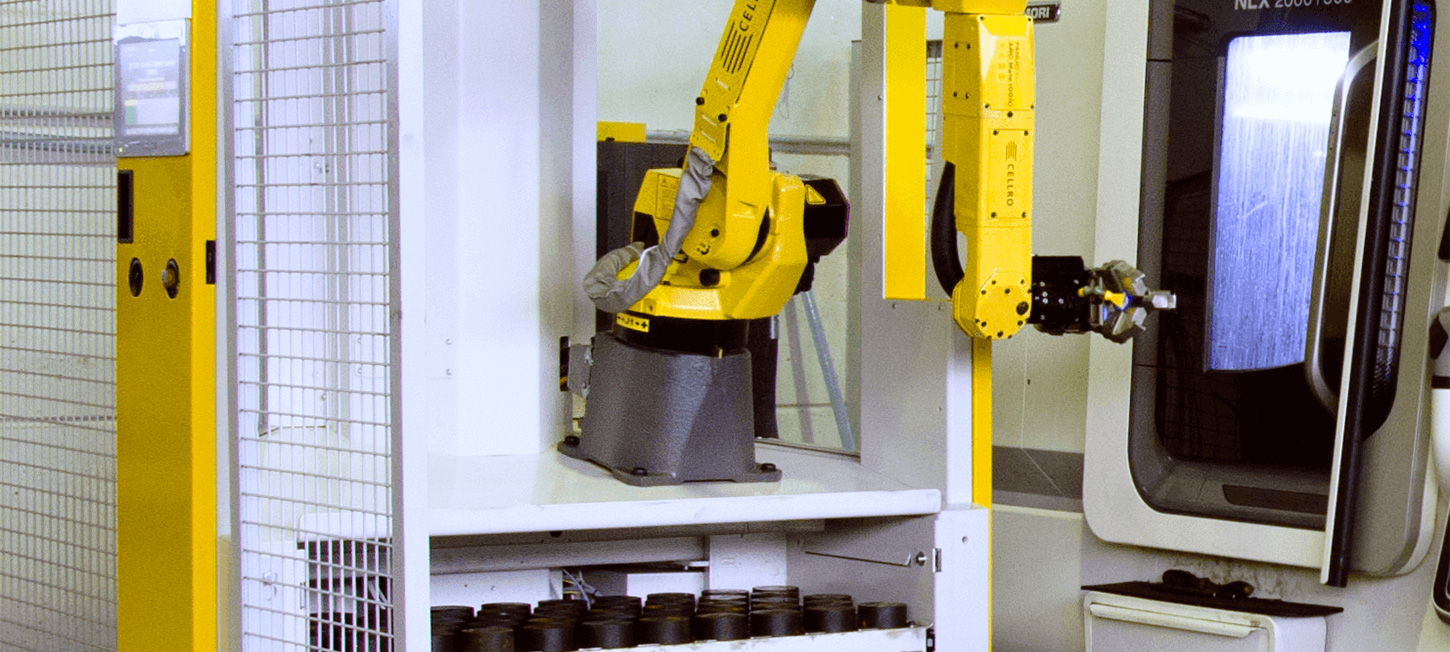
-
Cellro’s robot loading systems can be expanded with extra functionalities increasing the flexibility in your automation process.
Fixture Exchange and Collet Exchange ensure that you can process products with different dimensions one group after the other, in an automated and unmanned way. With Fixture Exchange and Collet Exchange, you can automate an exchange components and are not tied to specific dimensions.
Collet Exchange is a module that makes it possible to automate the loading of round products with different dimensions into your machine. Fixture Exchange is intended for the automated loading of rectangular products. Collets are used in lathes and Fixtures, also known as machine vices, are used in milling machines.
Flexibility in your automation process
With Xcelerate and Elevate, you can automatically load one or more series with similar work pieces. With Collet Exchange and Fixture Exchange, you are able to exchange the machine vice or the collet without the intervention of an operator. The size of the machine vice or the diameter of the collet therefore no longer determines which work pieces can be processed with automation. Therefore, you can process various product series with work pieces that have very different dimensions, unmanned, with your CNC machines.Ideal for suppliers
If you supply to many different companies, flexibility and speed are important competitive issues for your organisation. With Fixture Exchange and Collet Exchange, you can also process small and varied series, unmanned, by night. Xcelerate and Elevate have enough capacity to store all your unprocessed and processed products with various dimensions. You can meet the demands of your client more quickly. In addition, you can take on several different assignments. In the daytime, during the manned hours, you have enough time to take on more complex serial work.
Can Fixture Exchange or Collet Exchange be used with my CNC machine?
Fixture Exchange uses a zero-point clamping system to clamp the machine vice onto the pallet. This is the most common method used to clamp work pieces in the machine industry. Most milling machines are therefore already fitted with a zero-point clamping system. In addition, your CNC machine must also be able to receive NC numbers. With NC numbers, you can tell the machine which tools it must use for each product series. Since this requires greater communication with your machine, this can usually only be done with newer machines. In some cases, it’s also possible to install Fixture Exchange and Collet Exchange on existing machines, but the specialists from Cellro must first determine the adjustments that must be made to your machine.
Industry 4.0: how will it affect metalworking?

-
Industry 4.0 is all about digitisation and automation. Cellro offers automation solutions for CNC machines.
Industry 4.0 and Smart Industry solutions enable new production methods, new business models and new sectors. These innovations define new and smart production processes and require machines that are capable of self-directed working allowing for continuous optimisation of the production processes.
Flexibility is another key concept that characterises these changes in the machining industry. Products with varying specifications are produced at different volumes and with different lead times, in a fully automated process. Besides moving a wider range of products, the products are also cleaned, deburred, turned over or clamped, all within the same system. You’ll see that you and your competition can keep ramping up the efficiency and speed of your manufacturing.
In the Industry 4.0 era, your machines will be capable of seamless communication with automation solutions, and will continuously report their status.
- short term (“What am I producing now?”)
- long term (“Which components are showing signs of wear?”).
The result is a highly streamlined, predictable and therefore more profitable manufacturing process.
Make the move to automation together with Cellro
If you don’t want to miss the boat, and you’re curious to know how you can automate your machining process, you’ve come to the right place at Cellro. With Xcelerate and Elevate, Cellro supplies high-quality loading robots, capable of providing automation solutions for a wide range of CNC brands. Feel free to contact one of our experts at any time with no obligation.
Cobots compared to industrial robots
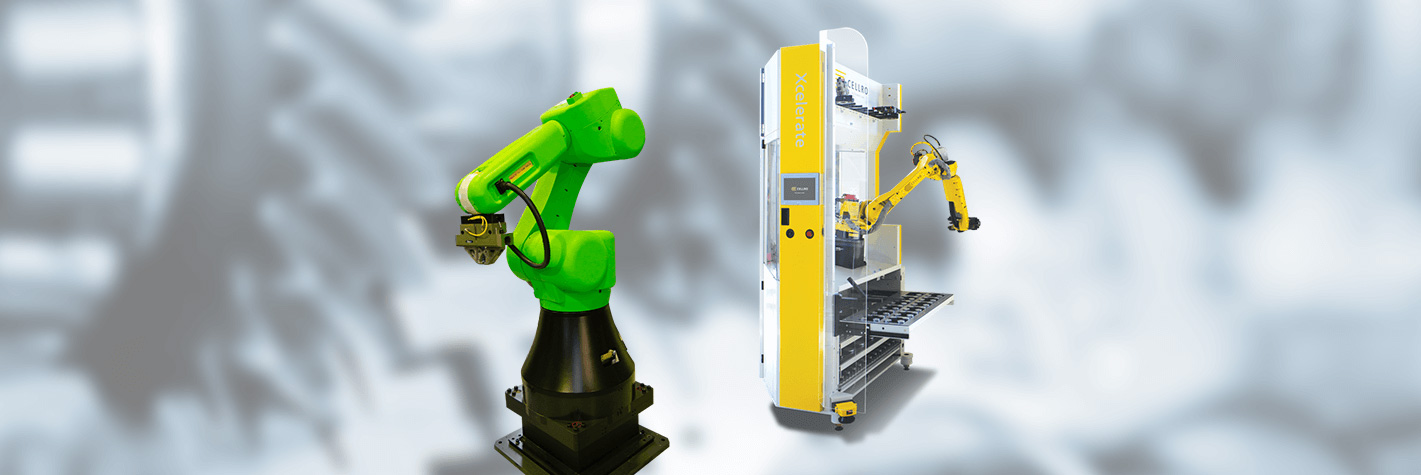
-
Cobots versus loading robots
The following factors play a key role in the comparison between cobots and loading robots:- Robustness: loading robots have a longer lifespan than cobots
- Speed: as of now, a cobot should not accelerate faster than 250 mm per second, while a loading robot’s maximum speed is four times that.
- Safety: when working with sharp products, hazardous situations may arise when a cobot is deployed; a loading robot works with a safety zone as standard
- Flexibility and storage capacity: a loading robot is a universal and complete system; a cobot is a complete robot but is not expandable and has a limited storage capacity
- Price-functionality ratio: a limited difference in price, but a significant difference in functionalities
- Weight: a standard cobot may not lift more than fifteen kilos, while loading robots can lift several hundred kilos
- Efficiency: a gripper switch and Fixture Exchange are not possible with a cobot, which severely restricts its flexibility and usability.
A cobot is especially suitable as an automation entry-level model for companies that have little experience with technology and robots and/or do not have much to spend. In some cases, it is possible to be satisfied with the cobot’s lower machine efficiency and lack of functionalities – functionalities that a loading robot could indeed offer. It all depends on how the company does business. However, companies in the machining industry often switch to a loading robot sooner or later.
Is my machine process suitable for automation?

-
Automating the manufacturing process in the machining industry increases market competitivness. However some companies have many unpredictable factors in their manufacturing process, leading to significant doubts regarding the possibilities of automating their manufacturing process.
However, todays flexible automation solutions make process stabilisation is often easier than one think and automation is suitable for small and medium-sized machining companies.
You can stabilise your manufacturing process and make it more manageable in a few simple steps. In this article, Cellto explores the importance of a stable manufacturing process in automation and summarises the most crucial factors for ensuring the stability of your manufacturing process. Process stability and process automation can be controlled.
The importance of a stable manufacturing process in automation
To achieve the maximum productivity of your CNC machines through automation, it’s preferable to make your production process as stable and predictable as possible.
At first glance that seems difficult, as many areas of your manufacturing process may well be hard to predict. What is the lifespan of a tool? How easy is it to ensure consistency when processing the materials? What are the temperature conditions? Automation requires a certain amount of control over these factors, and this doesn’t come about overnight. In practice, automation will therefore be phased in, starting with the manufacturing tasks best suited to stabilisation.
What are the conditions for a stable machine process?
A stable manufacturing process requires the management of tools, materials, chips and environmental conditions and the limitation of the (unpredictable) human factor in process automation. For successful process optimisation, it is essential to prevent the machine process from being disrupted by arbitrary human factors. Allow robots to do the simple tasks, while the specialist of the future remains responsible for managing the process and maintaining stability.
Satisfying those conditions, is the first step towards a stable manufacturing process and process automation.
Low-threshold process automation
A 100% stable process does not exist. You can start automating in phases even if your process is unstable. Make it simple. Start by automating recurring and manageable tasks in your production and you will quickly see an increase in your turnover. Furthermore, you can relieve your specialists of the easier, more repetitive work, enabling them to focus on the kind of work they trained for and you to manufacture more efficiently.
A compact solution that can be deployed in a flexible manner such as Xcelerate is extremely suited to this. On average, Xcelerate pays for itself even if you only use it for four hours a day. Once you have started automating, you will gradually discover the ways in which your manufacturing process can be further stabilised. This will allow you to continue to optimise your automation process as well as expand it little by little. Stability is therefore both the prerequisite for and the result of automation.

